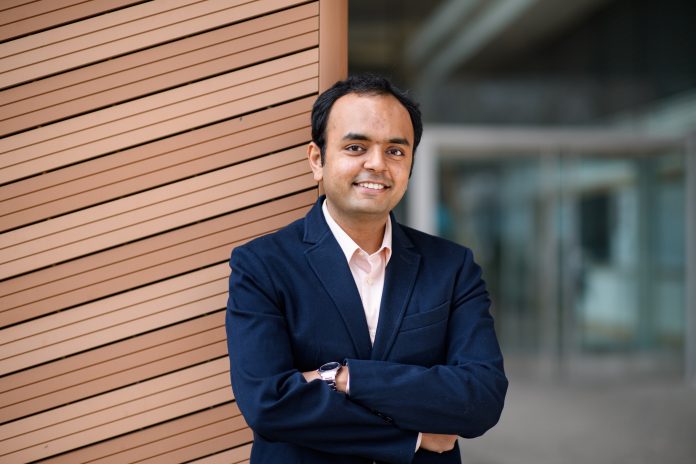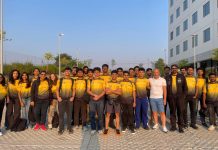Ankur Gupta, a prominent professor and a chemical and biological engineer, recently made headlines due to misleading reports claiming he had developed technology capable of charging devices like laptops in under 10 minutes. However, in a clarification, Mr. Gupta emphasized that these reports were inaccurate.
“I would like to clarify that we have not invented a technology to charge a laptop or electric vehicle in 10 minutes,” stated Mr. Gupta. “Many reports have oversimplified and misrepresented our work. Our research introduces a new model for controlling charging rates, but it is not yet an implemented technology. The development of such a technology could potentially take years to come to fruition. While I am enthusiastic about our findings, it is important to manage expectations.”
In an interview, Youth Incorporated got in touch with Mr. Gupta and he further elaborated on his recent research and underscored the need to address misinformation surrounding his work with us.
1. Could you provide an overview on what your latest research paper is all about?
Ans: “Our research provides a new mathematical model to simulate how ions will move in a network of pores. If there is a large city with lots of roads and intersections, the cars need traffic lights and roundabouts to navigate the city. Similarly, when ions are moving through a network of pores, we need to define “rules of the road”, which is what our paper proposed.” Explains Mr.Gupta in simple terms.
2. What consequences might your findings have, and how do you think they will alter charging rates?
Ans: Our research could help improve understanding of how a supercapacitor might charge or discharge. For instance, in realistic settings, supercapacitors consist of porous materials with a network of pores. Our results can help simulate and infer the impact of that network on charging and discharging. It should be noted that our work is still a model and is not predictive. It still needs to be validated with experiments.
Regarding charging rates – it is hard to speculate. The work could help design and optimize supercapacitors, but it is not possible to pinpoint a specific charging time.
3. What were the key challenges you faced in developing the model, and how did you address them?
Ans: Predicting movement of ions in a network of pores is a mathematically challenging problem. It took us a couple of years to fully reconcile all our calculations. One of the key challenges was solving the “junction” problem, i.e., what happens at an intersection. We overcame this challenge with a continuous effort. We looked at the equation for a long time, repeatedly, and it was only later that we realized that we have derived modified Kirchhoff’s law.
4. In regards to the recent misleading news about inventing a technology that could charge a laptop or device in 10 minutes, what would be your perspective on these claims, and how might your research contribute if this technology had to be invented in the near future?
Ans: The claims are incorrect and have nothing to do with our paper. We weren’t contacted for these stories and thus we want to distance ourselves from such incorrect claims. It is journalistic malpractice to claim such advancements without consulting with the appropriate scientific team. Science is a slow and hard process, and it is to be noted that such dramatic advancements need years and decades of research from multiple research groups and industry.
We have always made it clear that while supercapacitors charge fast and our work can improve their future designs, supercapacitors are not as good as batteries in terms of storing energy. Therefore, Our research can help design supercapacitors or supercapacitor-battery hybrids. There is interest in building hybrid devices that can combine the best of both technologies. Our work can contribute to better understanding in such systems. However, to build very fast charging devices capable of entering the mainstream market, many other things need to happen. For example, many research groups are trying to find better materials for electrodes and electrolytes.
5. Lastly, could you tell us about your engineering background and experience, as well as some of the research works or projects you worked on at the University of Colorado Boulder?
Ans: I grew up in Ghaziabad and pursued my B. Tech in Chemical Engineering in IIT Delhi. I pursued research at IIT Delhi under the guidance of Prof. Shantanu Roy, which was a transformative experience for me. I distinctly recall spending late nights in the lab to finish simulations. The rigor I learned at IIT Delhi continues to have an impact on me until today.
After finishing IIT Delhi, I pursued my PhD at Massachusetts Institute of Technology (MIT) under the guidance of Prof. Patrick Doyle and Prof. T. Alan Hatton. Here, I worked on a different topic, especially nanoemulsions and their applications in pharmaceutical and drug delivery, and conducted research while employing both experimental and computational components. MIT and my professors taught me the ability to think independently, to challenge the existing thought process, and to be bold in my approach.
After MIT, I spent three years at Princeton under the guidance of Prof. Howard Stone. This was also a very crucial piece of my scientific journey as working with Prof. Stone significantly improved my mathematical understanding of various topics. I tackled very different kinds of physical problems, ranging from a few nanometers to hundreds of microns. I started the ionic transport project here, which led to an important publication Gupta, Zuk and Stone Physical Review Letters 2020.
At CU Boulder, our lab, Laboratory of Interfaces, Flow and Electrokinetics (LIFE), works on two topics. One focuses on energy storage devices, such as the recent paper. The other focuses on better design of particles and devices for lab-on-a-chip applications. More details can be found at our university website of Colorado.





























